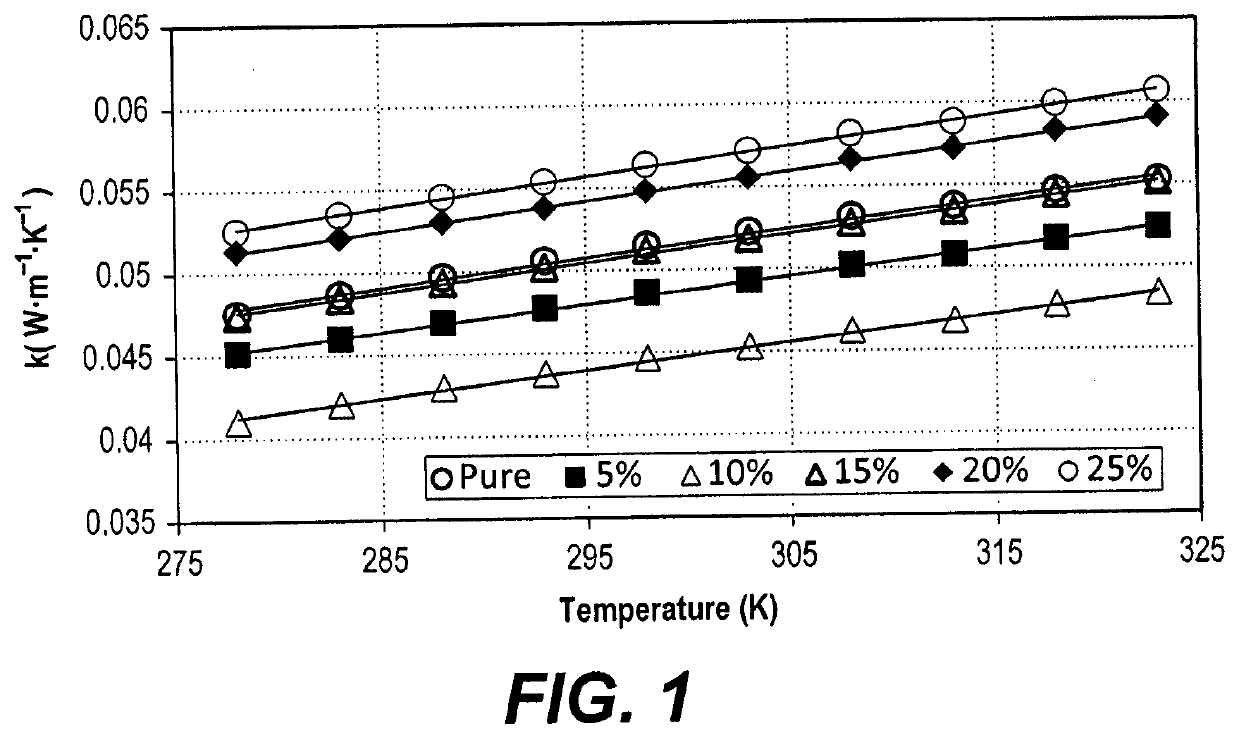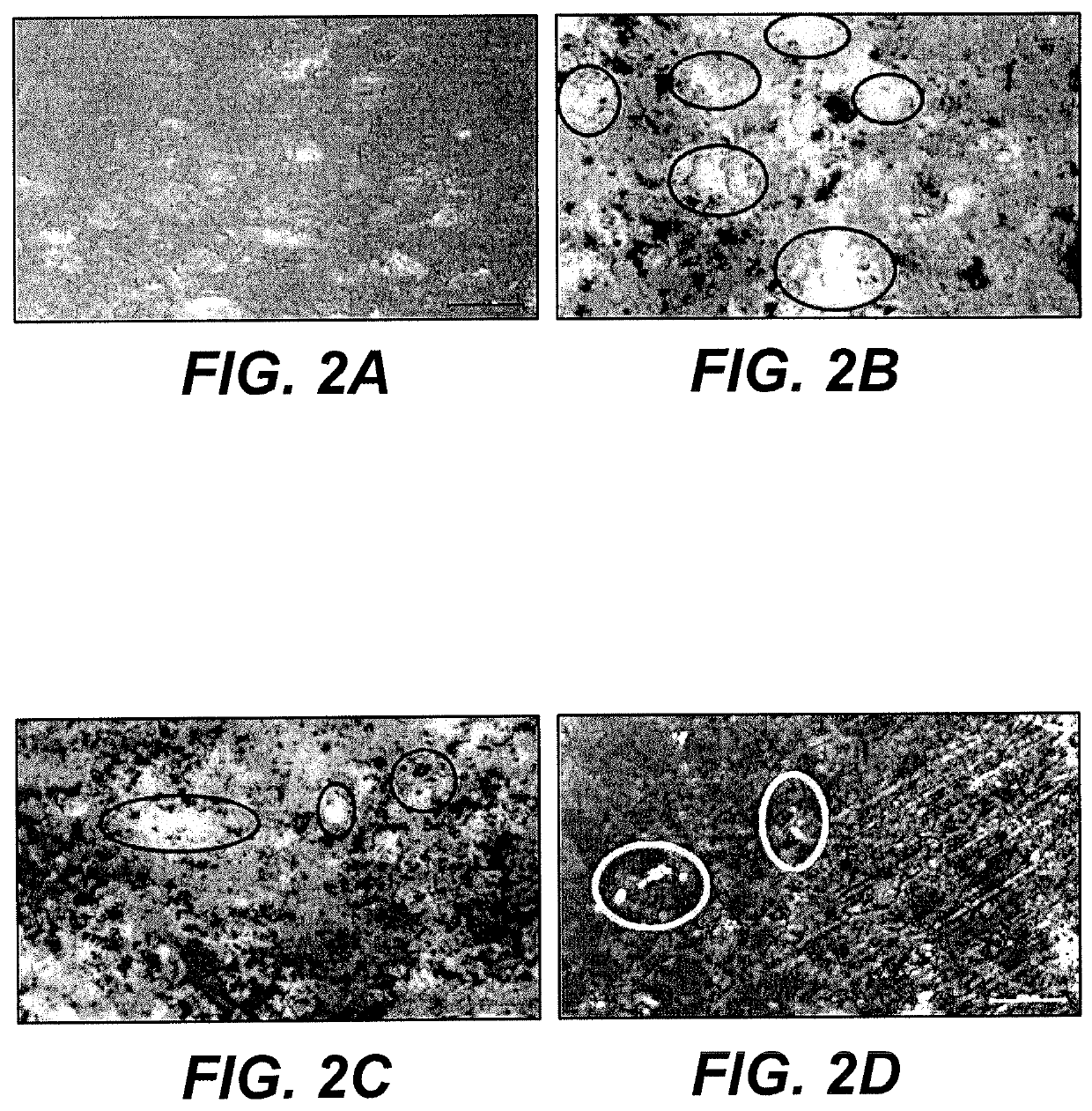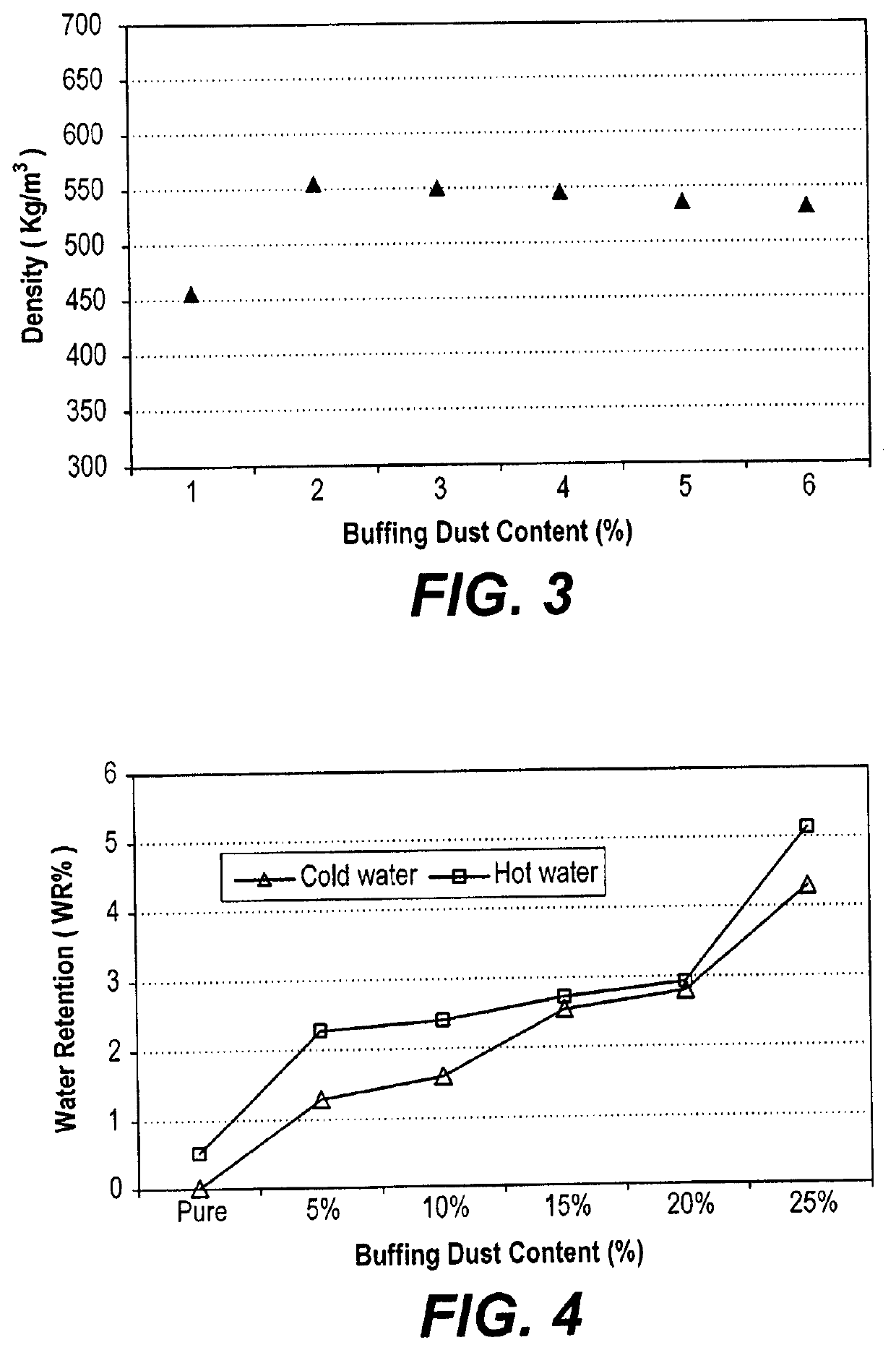Buffing dust waste/polystyrene thermal insulator
a technology of polystyrene and dust waste, which is applied in the field of polymer composites, can solve the problems of 36 million kg of bd waste a year, add to environmental pollution, and large amounts of waste, and achieve good insulator, low thermal conductivity, and high mechanical properties
- Summary
- Abstract
- Description
- Claims
- Application Information
AI Technical Summary
Benefits of technology
Problems solved by technology
Method used
Image
Examples
Embodiment Construction
[0019]The buffing dust waste / polystyrene thermal insulator is a polymer composite containing 0.1%-25% by weight buffing dust waste from a leather tannery, the balance being polystyrene. The composite has extremely low thermal conductivity (e.g., 0.0447 W / m-K for a composite 10% budding dust by weight), making it a good insulator, while still having relatively high mechanical properties. The thermal insulator is made by mixing the buffing dust with the polystyrene polymer in a twin-screw extruder and pouring the mixture into a steel mold. The mold is heated and compressed in a hot press machine, e.g., at 500 kg force at 180° C. for 20 minutes, which may be followed by 500 kg force at 125° C. for an additional 20 minutes. The resulting composite polymer is suitable for use as thermal insulation in buildings.
[0020]In the following examples, buffing dust (BD) powder at various weight percentages (0-25 wt %) was mixed with polystyrene (PS) thermoplastic polymer using a Thermo Scientific™...
PUM
| Property | Measurement | Unit |
|---|---|---|
| particle size | aaaaa | aaaaa |
| density | aaaaa | aaaaa |
| density | aaaaa | aaaaa |
Abstract
Description
Claims
Application Information
 Login to View More
Login to View More - R&D
- Intellectual Property
- Life Sciences
- Materials
- Tech Scout
- Unparalleled Data Quality
- Higher Quality Content
- 60% Fewer Hallucinations
Browse by: Latest US Patents, China's latest patents, Technical Efficacy Thesaurus, Application Domain, Technology Topic, Popular Technical Reports.
© 2025 PatSnap. All rights reserved.Legal|Privacy policy|Modern Slavery Act Transparency Statement|Sitemap|About US| Contact US: help@patsnap.com



